My Conference is Better Than Your Conference…
I had the opportunity to attend the wonderful International Symposium on Online Journalism (ISOJ) this weekend. It’s a great event where educators, professionals and students share ideas and discuss the role of technology in journalism. Now, in it’s 14th year, it’s been the place where I have explored disruption in journalism since before I entered the Ph.D. program at UT. Toward the end of the conference on Saturday, after a question I asked that mentioned South By Southwest (SXSW) as a media engagement opportunity related to research presented by Jake Batsell of SMU, a few comments and tweets went around comparing ISOJ and SXSW, in some cases making what I felt were unfair assessments. Since I attend many of these conferences that intersect technology and media, I wanted to provide my take on the strengths, weaknesses and differences of these various opportunities for enrichment and development.
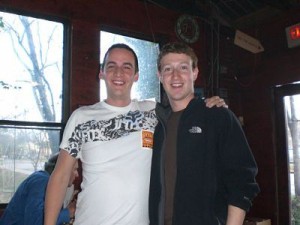
TXST student Philip Hadley will long remember posing for this photo with keynote speaker Mark Zuckerberg at Iron Works BBQ in 2008
South By Southwest Interactive (SXSW) – I have attended SXSW since 2005 and have led a student reporting project of the event at SXTXState.com for the past six years. I have presented at or been asked to lead official SXSW events for the past five years. I can say unequivocally that there is no one event that has informed and influenced my approach to media more than SXSW. Its value to me is in my being exposed to big thinkers, big ideas and technology tools, platforms and trends. My students and I have been in the audience to hear from tech luminaries that include Craig Newmark, Jimmy Wales, Mark Zuckerberg, Internet pioneer Bob Metcalfe, Marissa Mayer (before she took the reins at Yahoo), Gary Vaynerchuk, Kathy Sierra, Lawrence Lessig, Chris Anderson of Wired (at the time) and many more. This year alone, we saw Tim Berners-Lee, Elon Musk, Chad Hurley of YouTube, David Karp of Tumblr, Matthew Inman of the Oatmeal among many other distinguished guests and attendees.
We were present when Twitter tipped (I first joined Twitter during SXSW 2007) and when Foursquare and Gowalla were introduced. We have seen the Interactive portion of the festival go from a manageable 8,000-9,000 attendees to more than 30,000. We’ve watched discussions on breakthrough technologies, as far back as the advent of CSS to Web frameworks to iOS programming to responsive design to the “learn to code” revolution. Journalism as a track was added to SXSW in the ensuing years that I have been attending. I have been encouraged to see people like Jill Abramson, David Carr, Jeff Jarvis, Evan Smith, John Keefe, Bill Adair, Jim Brady, Burt Herman and Brian Stelter featured. I’ve been on panels with data journalism innovators Aron Pilhofer, Tyson Evans and Matt Waite. My students used Storify during SXSW when it was still in beta. It’s been a strong confirmation that SXSW is not just a tech conference, a developer conference or a gadget conference. It’s a media conference in the broadest sense, and even in its current, behemoth incarnation, it is still the place to learn about (or more importantly, to be able to critique and assess) the “next big thing.”
The coverage that my students have done over the past six years is a body of work that demonstrates the educational value of attending this event. And the fact that some of them have ended up on panels themselves in the years following their SXTXState.com participation has been a surprise bonus. There is a culture and a vibe to attending SXSW. Yes, it’s bigger than it used to be. It’s not as easy to do all the things you want to do, and you may not be able to have a conversation with everyone you want to meet (although I have wonderful photos of my students talking with a range of tech rock stars). There are lots of parties and distractions. There are people who are there to only pitch their startup. But somehow in the mayhem, main themes rise to the top, and I try to write about them most years. Here are a few of my wrap ups:
So, even with all the haters, I still feel that SXSW is a unique opportunity for me to think beyond the confines of journalism. My goal is that something about the event stays with students. It becomes part of them and that is emanated from them in all their future interactions. It encourages them to look beyond their chosen industry and seek inspiration in what might initially seem an unlikely area.
SXSWEDU is in it’s early years, but has already become an important addition. This year, the keynote was Bill Gates. And, of course, there are the music and film festivals that just add on to the hoopla of mid-March in Austin. There’s something for everyone at SXSW, it’s not a bad time to be in Austin. Plus, two words: breakfast tacos. It’s expensive for a badge, expensive to travel to SXSW, you have to plan well in advance. And some of these aspects are things that don’t apply to me as a local. But if you can make it happen, I highly recommend a visit to SXSW. If you can propose a panel when the Panel Picker opens this summer and get it accepted, that’s a great way to get you caught up in the SXSW excitement. As a matter of fact, my students’ final assignment for the SXTXState project is to prepare their own panel proposal to submit for SXSW 2014.
International Symposium on Online Journalism (ISOJ) – I was invited to attend the very first ISOJ in 1999, the semester before I started in the Ph.D. program at UT. I remember feeling honored to be included by Rosental Alves in this inaugural event and being a bit overwhelmed by the topics of this new career field I had chosen. Since then, I have attended each ISOJ. I have presented research and moderated panels. I have accompanied students. I have watched as the conversations changed from fear of the death of newspapers to optimism about a digital future. I’ve heard talks of paywalls and advertising models and social media and news startups and non-profits. I’ve seen news executives come and go. I’ve inquired about skills we should be teaching students over the years and have watched the advice go from emphasizing the basics to gaining multimedia traction to learning to code. I have seen the research segment of the symposium spawn a well respected and disruptive journal. No other event seamlessly integrates professional and scholarly as well as ISOJ.
And, I have met and had engaging conversations with people who have had a profound influence on my career and those of my students. I have much to thank Rosental and Amy Schmitz-Weiss and all the people who put on ISOJ for the wonderful job they have done each year, identifying just the right mix of people, places and topics as they relate to journalism.
And, I am extremely lucky that both these events, SXSW and ISOJ, happen in Austin! They are different events offering different value. They are an excellent complement as a one-two punch in the Spring. The big ideas from SXSW are honed and discussed and dissected as they relate to journalism at ISOJ. The gigantic nature of SXSW demonstrates the scope of digital media’s domain, and the intimate nature of ISOJ allows for more focused application and easier access. Plus at the $30 registration rate, it’s an incredible bargain to attend.
But I also attend other tech-related development events throughout the year, when I can. During the past academic year, I have been lucky to be able to also attend:
National Institute for Computer-Assisted Reporting (NICAR) – I have attended NICAR twice over the years, but I hope to attend it as often as possible going forward. I go to NICAR purely as a development opportunity. I was introduced to this event as I became interested in data journalism and programming. The NICAR community is unbeatable in terms of representing the people who are doing the most progressive work in news. I am talking about folks from NY Times, WNYC, Digital First, NPR, LA Times, Chicago Tribune, ProPublica, Politifact, Texas Tribune and more. And, they have great training workshops at reasonable prices. It’s a great place to get a foundational exposure to topics such as Web frameworks, scraping, programming and data visualization.
NICAR takes place in different cities each year. I attended in Raleigh and Lousiville. I highly recommend to anyone who is interested in data storytelling, expanding their skill set and becoming a part of a supportive and progressive tech community.
NICAR is a subset of the Investigative Reporters and Editors organization. I have not attended any of their conferences as of yet, but their national meeting is being held in San Antonio this year, so that’s another central Texas opportunity for enrichment.
Online News Association (ONA) – Online News Association approaches the digital revolution in a broad way, much like ISOJ, but on a much larger scale. I have attended the past four ONA conferences and presented once, on the “If I Were in Charge, …” session. Like NICAR, my attendance is mostly for development and networking. It emphasizes multimedia storytelling, social media and data journalism. I am guessing that more than 1,000 attend ONA, as opposed to 300 or so at ISOJ. They host the prestigious Online Journalism Awards. They also offer great training opportunities by providing workshops at reasonable prices on the Thursday before the main event. They host ONA in different cities each year, usually large cities like Boston, DC or San Francisco. They are progressive in their selection of speakers. I have seen Ben Huh of I Can Has Cheezburger, Dick Costolo of Twitter and prominent blogger Robert Scoble. The audiences for ISOJ, NICAR and ONA overlap, but each has a slightly different emphasis.
Journalism Interactive (JiConf) – JiConf has had two events so far, and I have attended and presented at both. For the 2013 conference, I was on the national planning committee. This event is primarily focused on journalism educators, but has attracted professionals as speakers and attendees. While some of the other events have educator subsets, this event focuses on integrating digital media into curriculum. Topics include teaching multimedia, mobile reporting and social media, and it serves as a place for teachers to begin to learn about programming and data. This group is greatly needed in making sure that journalism education keeps step with the changes in the industry. It also has a research element that continues to grow and be refined. It takes place at different universities each year, so far it has been held at University of Maryland and University of Florida.
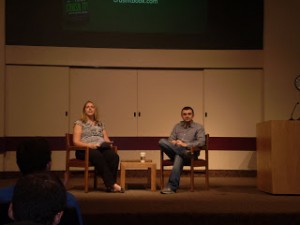
We were lucky to get social media expert Gary Vaynerchuk to join us during MCWeek 2009 on the day his book Crush It hit the NY Times best seller list.
Mass Comm Week – I have to mention one more annual event. It’s Mass Comm Week held at Texas State University each fall. It has a long history, dating way before my time at TXST. I have been involved with it since 2008, first as the social media leader, instituting our blog coverage, live streaming and Twitter and Facebook interaction, and for the past two years, as the director of the committee who puts on Mass Comm Week. I have to admit, in the years since I have been involved, I have tried to influence the programming to be more in the realm of SXSW. We have had social media expert Gary Vaynerchuk, Internet pioneer Bob Metcalfe, Brian Stelter of NY Times, Annie Werner of Tumblr, Evan Smith of Texas Tribune, Burnie Burns – CEO of Rooster Teeth, Hugh Forrest of SXSW Interactive, Ethan Zuckerman from MIT’s Center for Civic Media, Matt Stiles of NPR, people from local organizations HomeAway, Spredfast, Blackbaud and GSD&M, and executives from news organizations across Texas. TXST alumni are prominent in our programming. It’s another opportunity, close to Austin, to be able to hear from progressive media professionals. Attendees are mostly students, but anyone is welcome. And it’s free!
So, as you can see, there are many opportunities for development and participation. There’s no need for name calling or unfair comparisons. I have selected each of these events for their unique aspects. There are others, and maybe you have favorites for different reasons. We all have limited time and numerous constraints that demand our time, so we each have to make our own decisions about which events offer the most value, whether for ourselves or our students. There are also numerous local events and meetups (like Hacks/Hackers, ONA Locals, tech and design meetups, etc.) that I encourage students, faculty and others to attend throughout the year that augment what these larger events introduce.
The only mistake is in not recognizing the vast opportunities that exist to advance one’s development and insight.
One thought on “My Conference is Better Than Your Conference…”
Comments are closed.
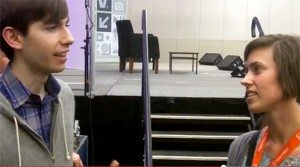
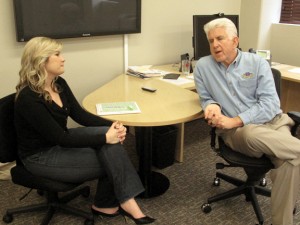
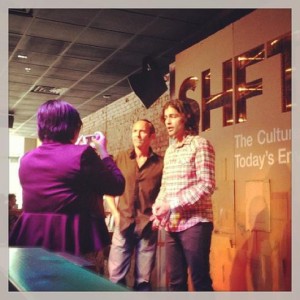
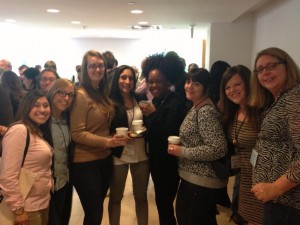
Thanks for this interesting read, Cindy. I know you and the students represent us well no matter conference you attend. And of course it’s nice that SXSW is right up the road.